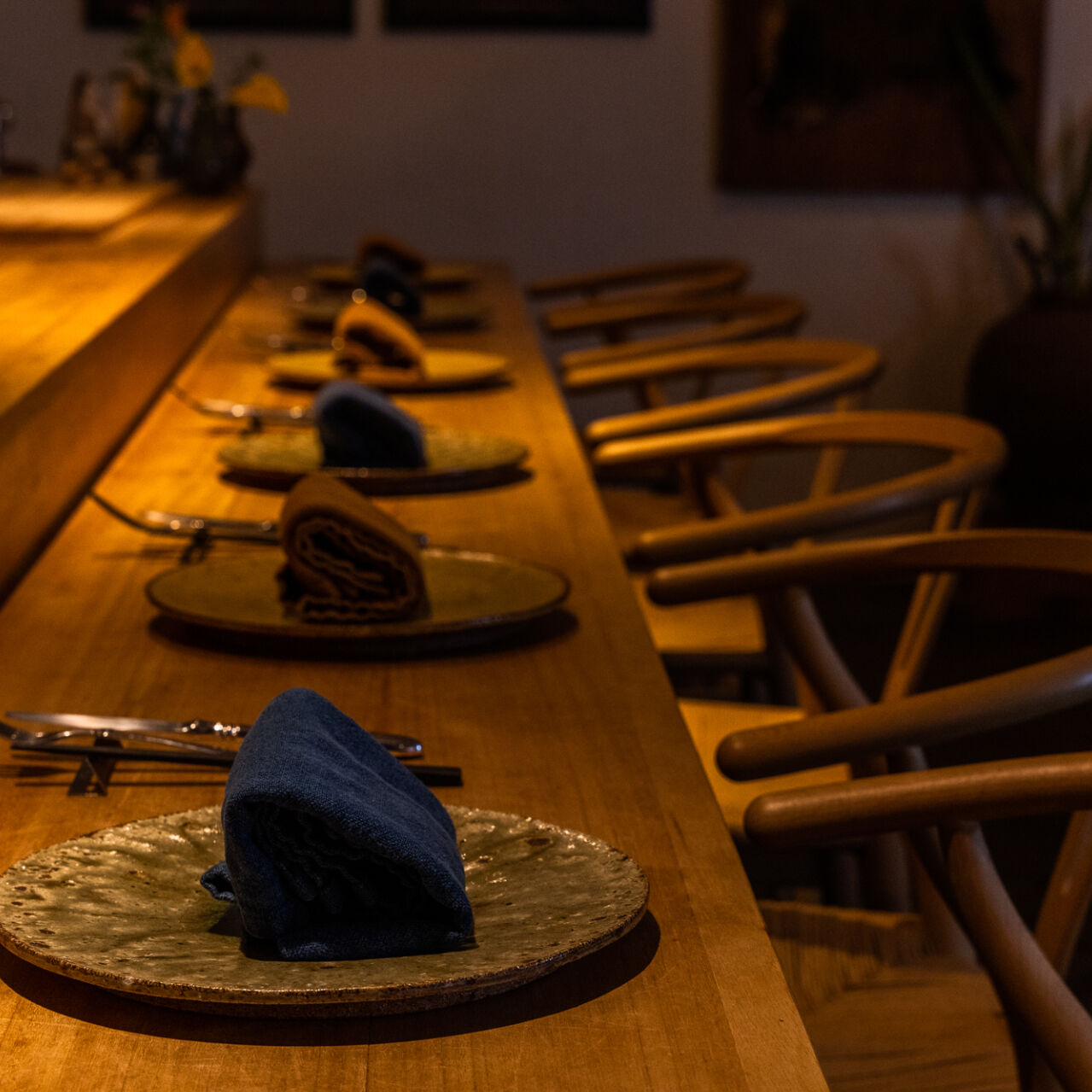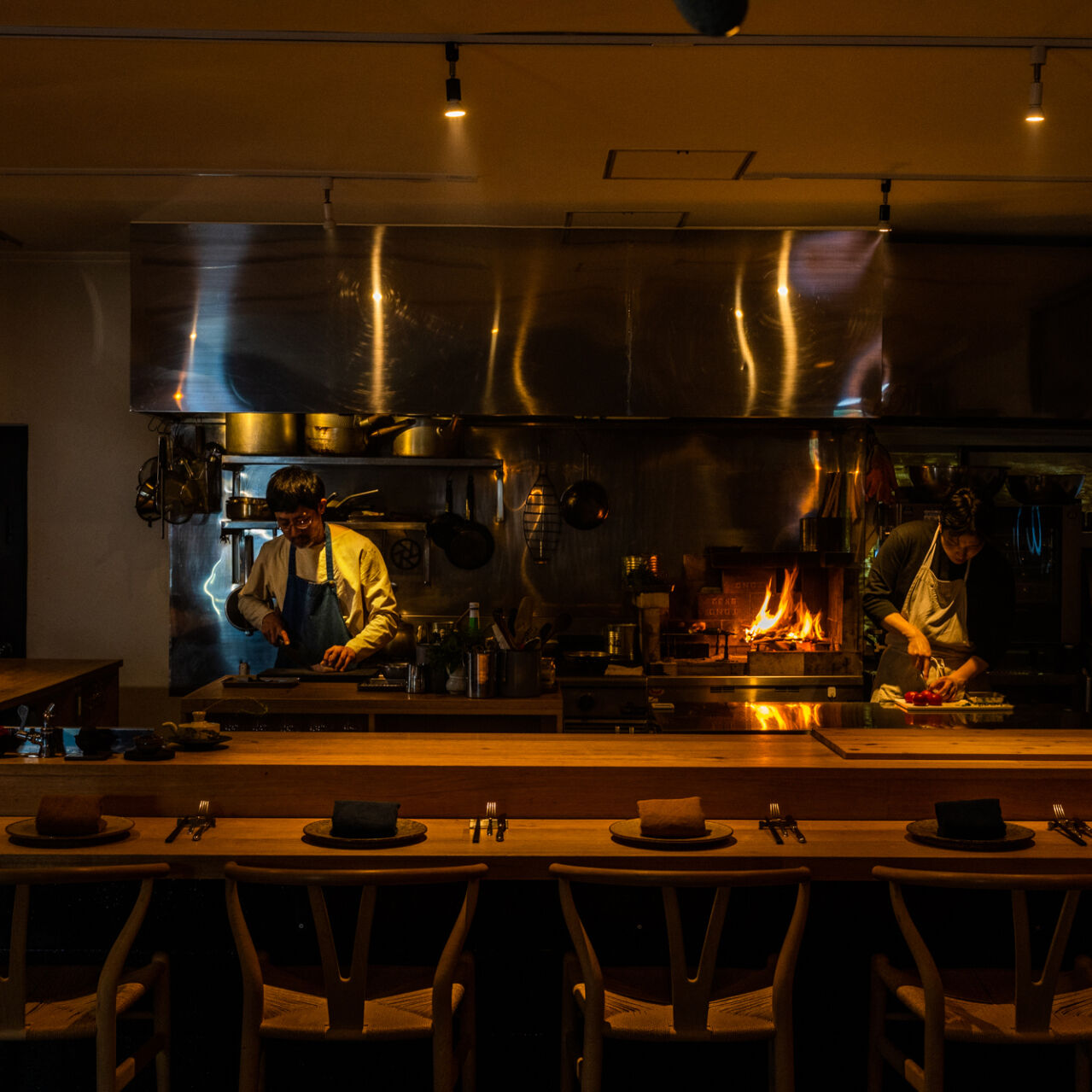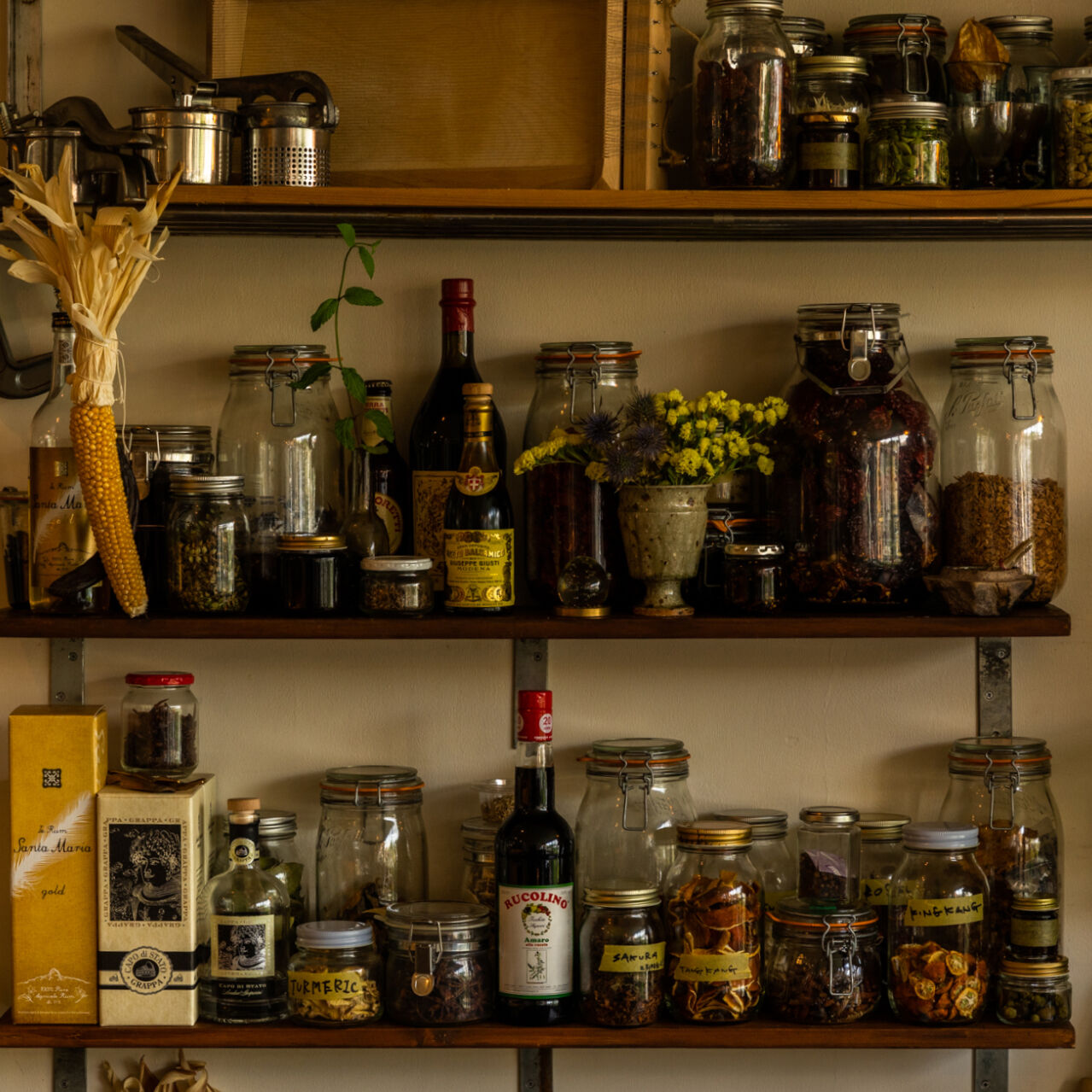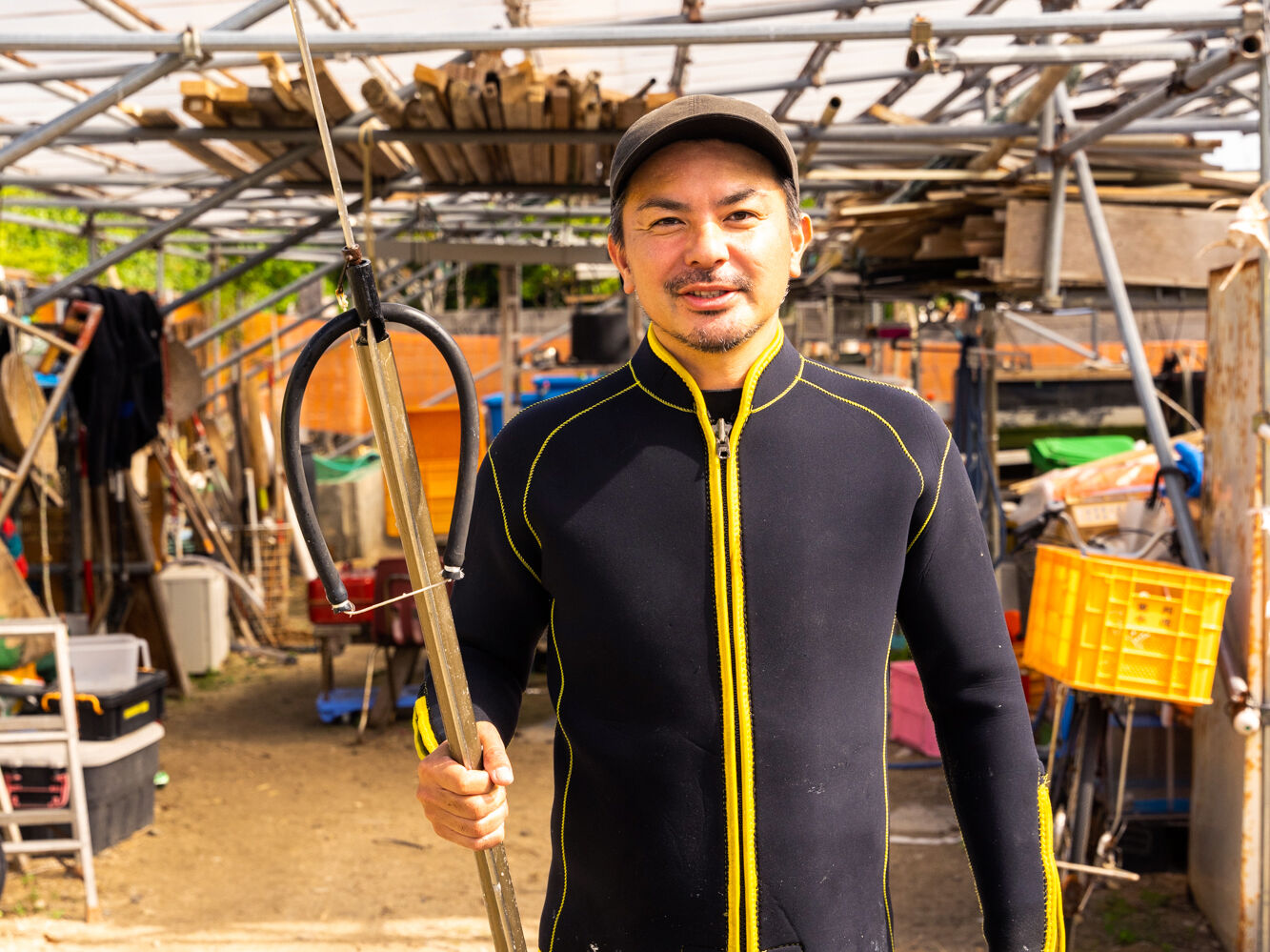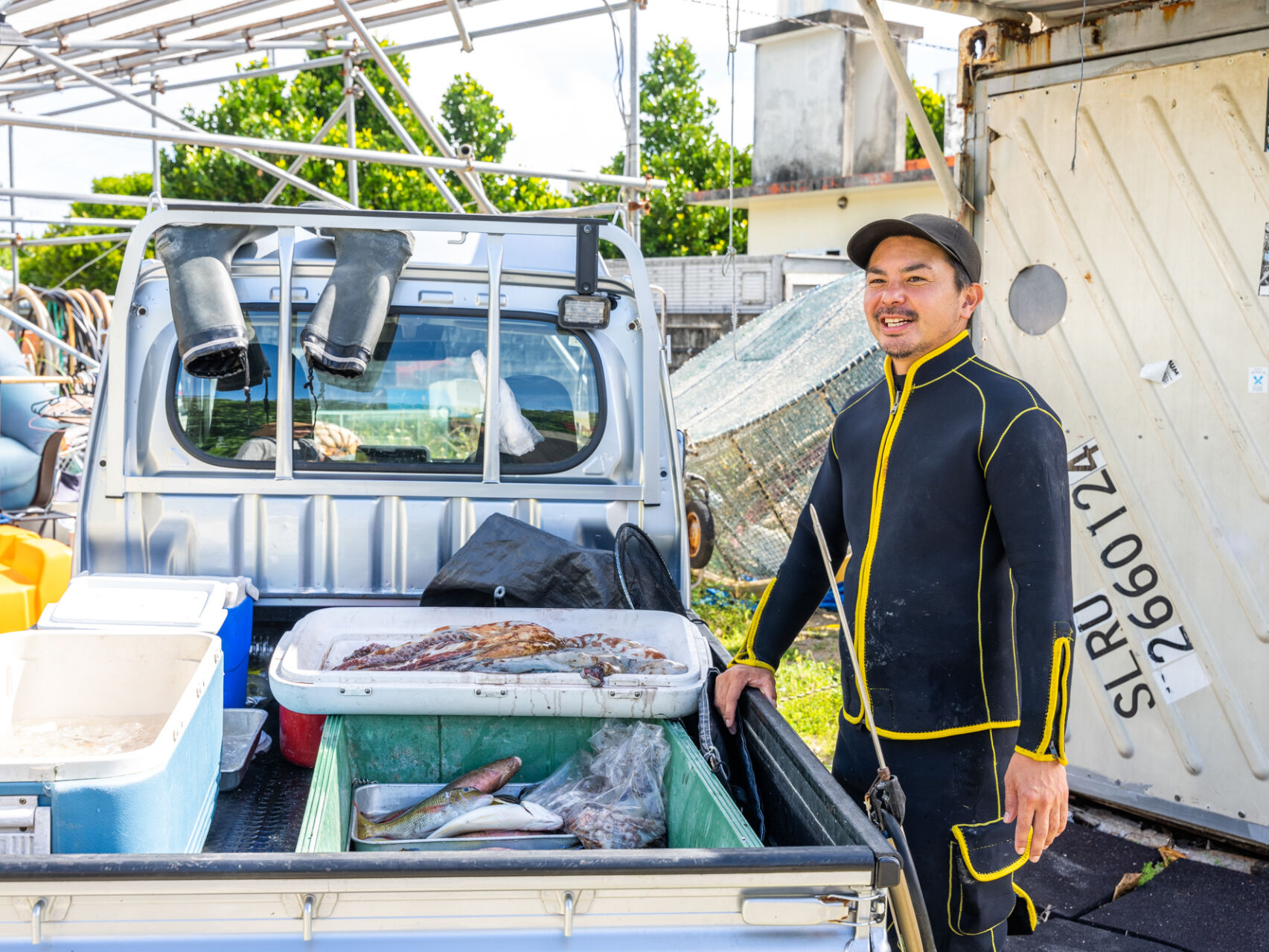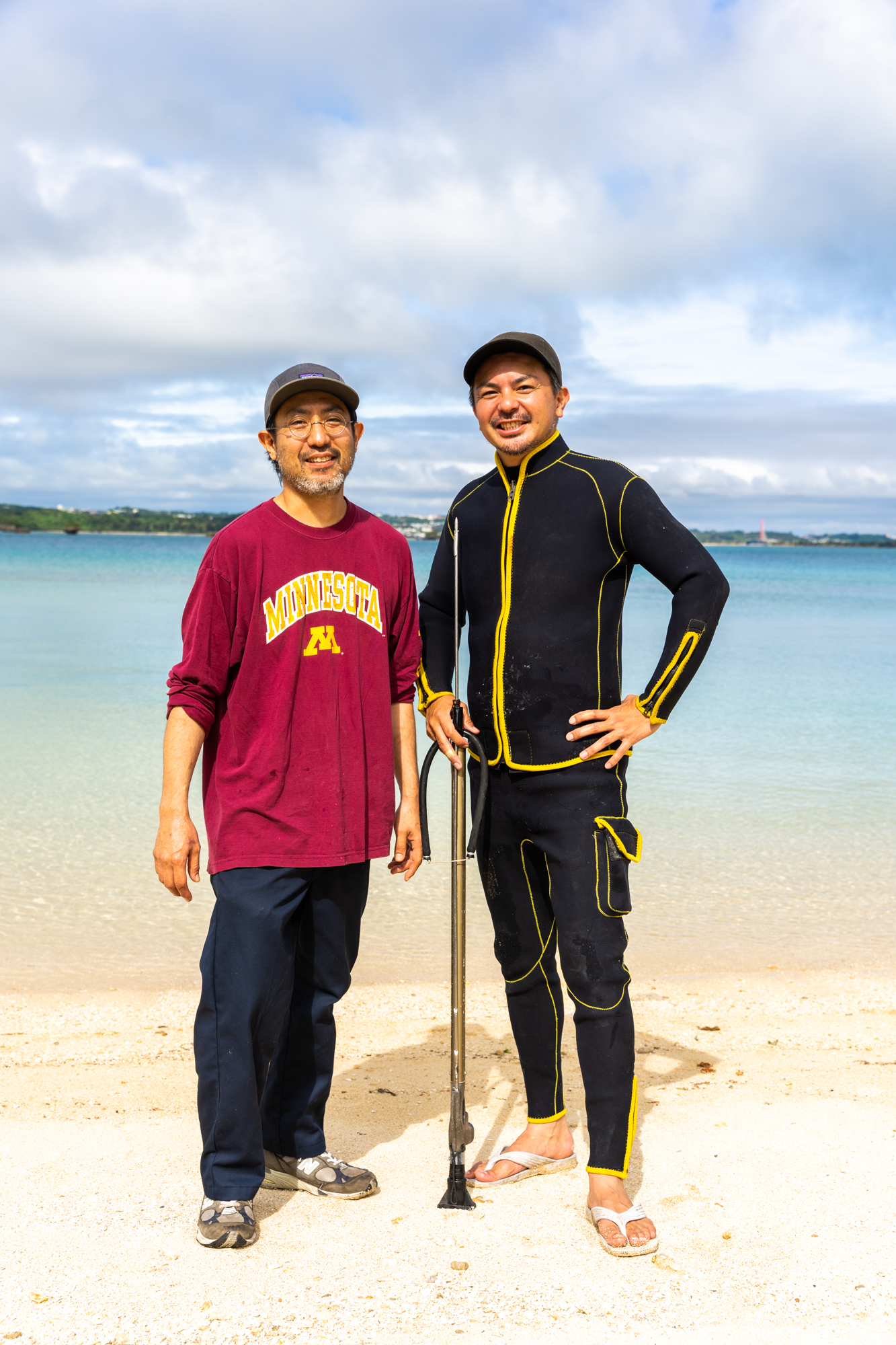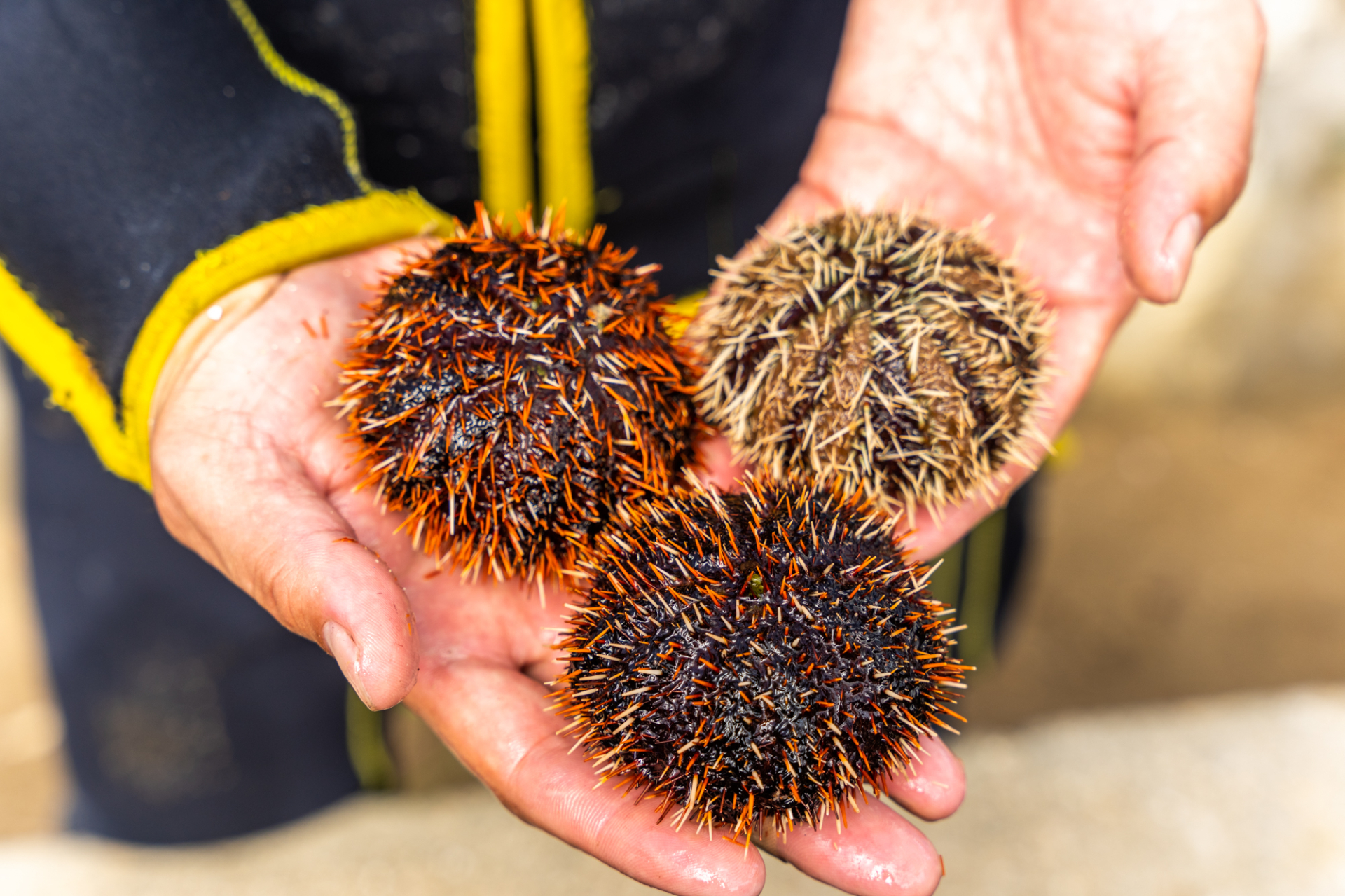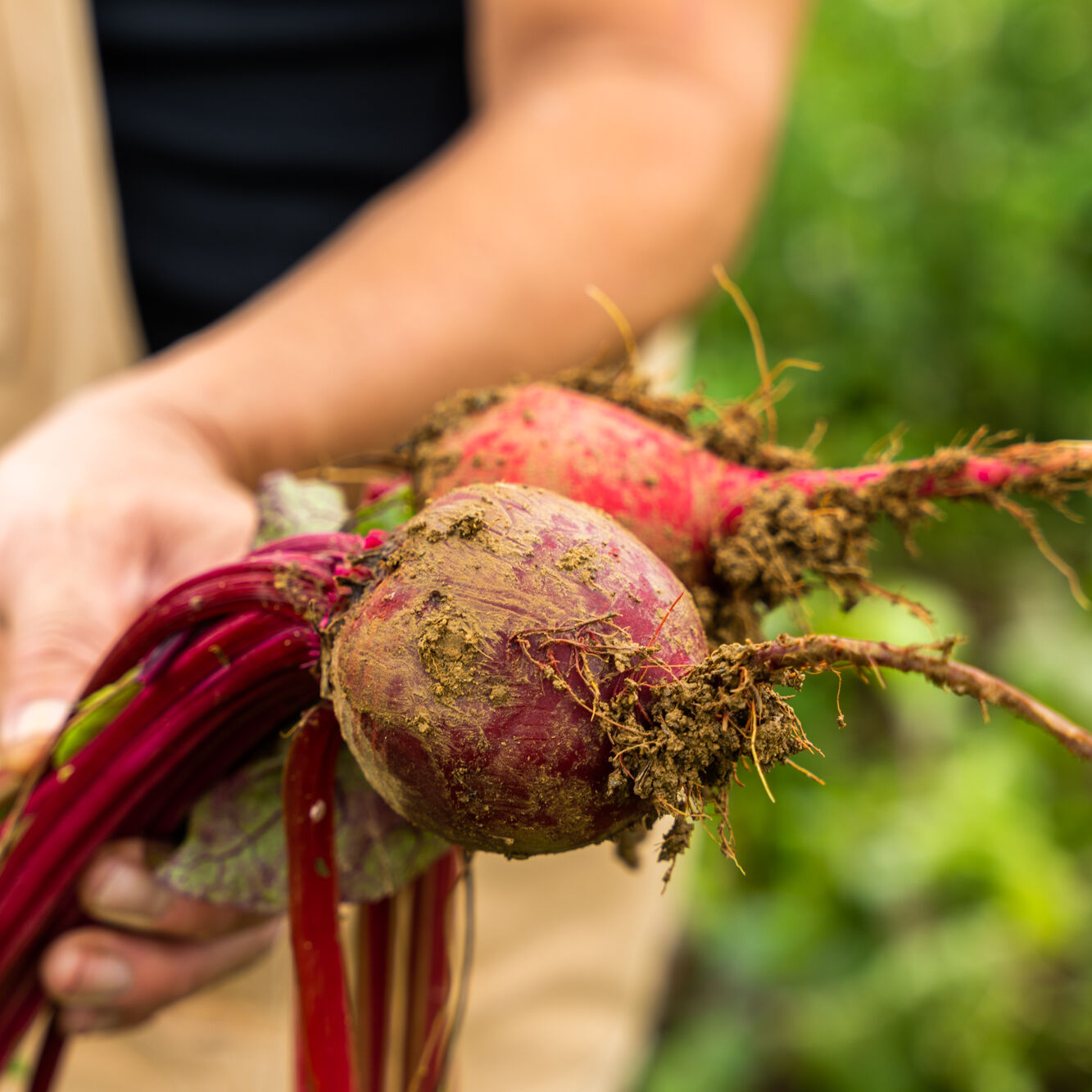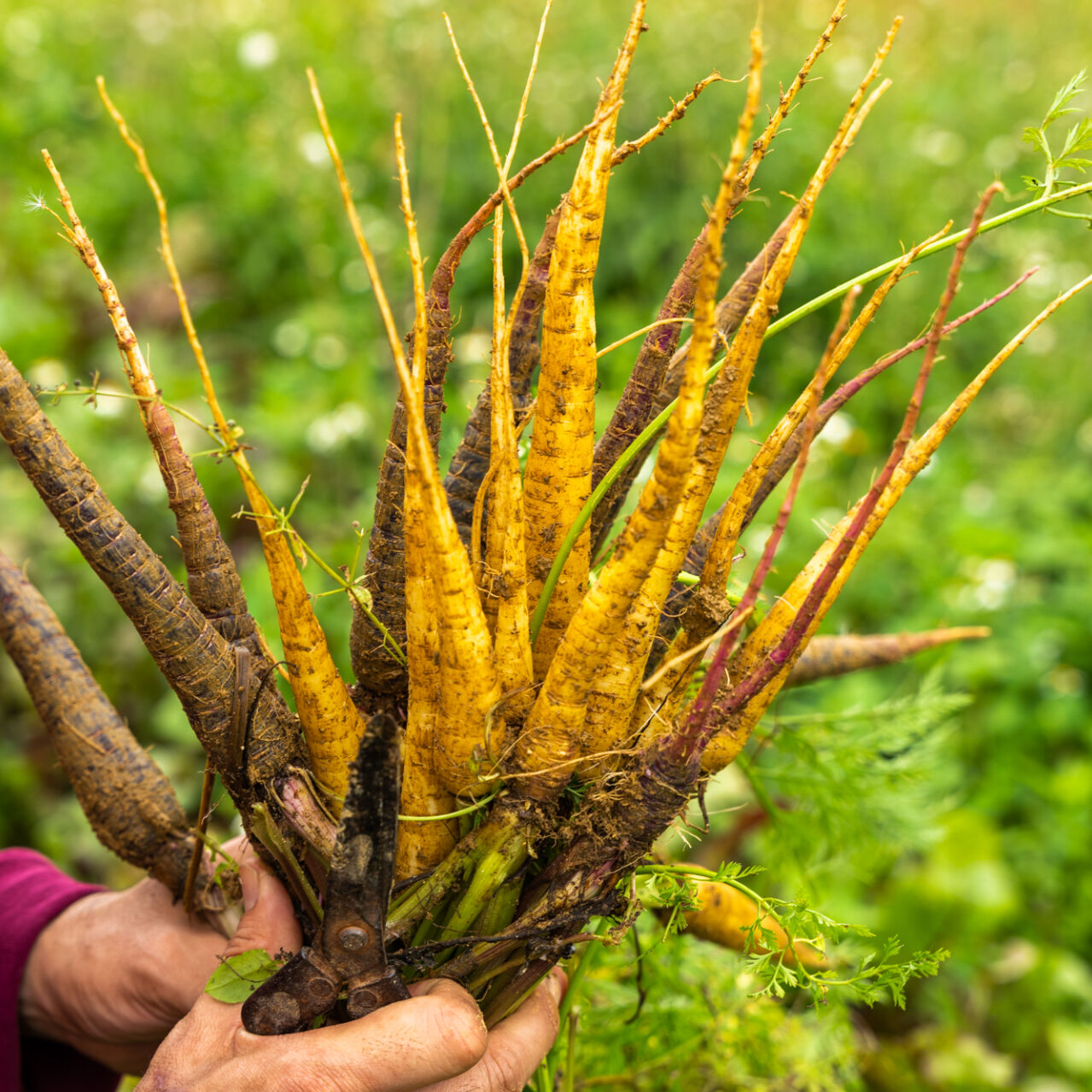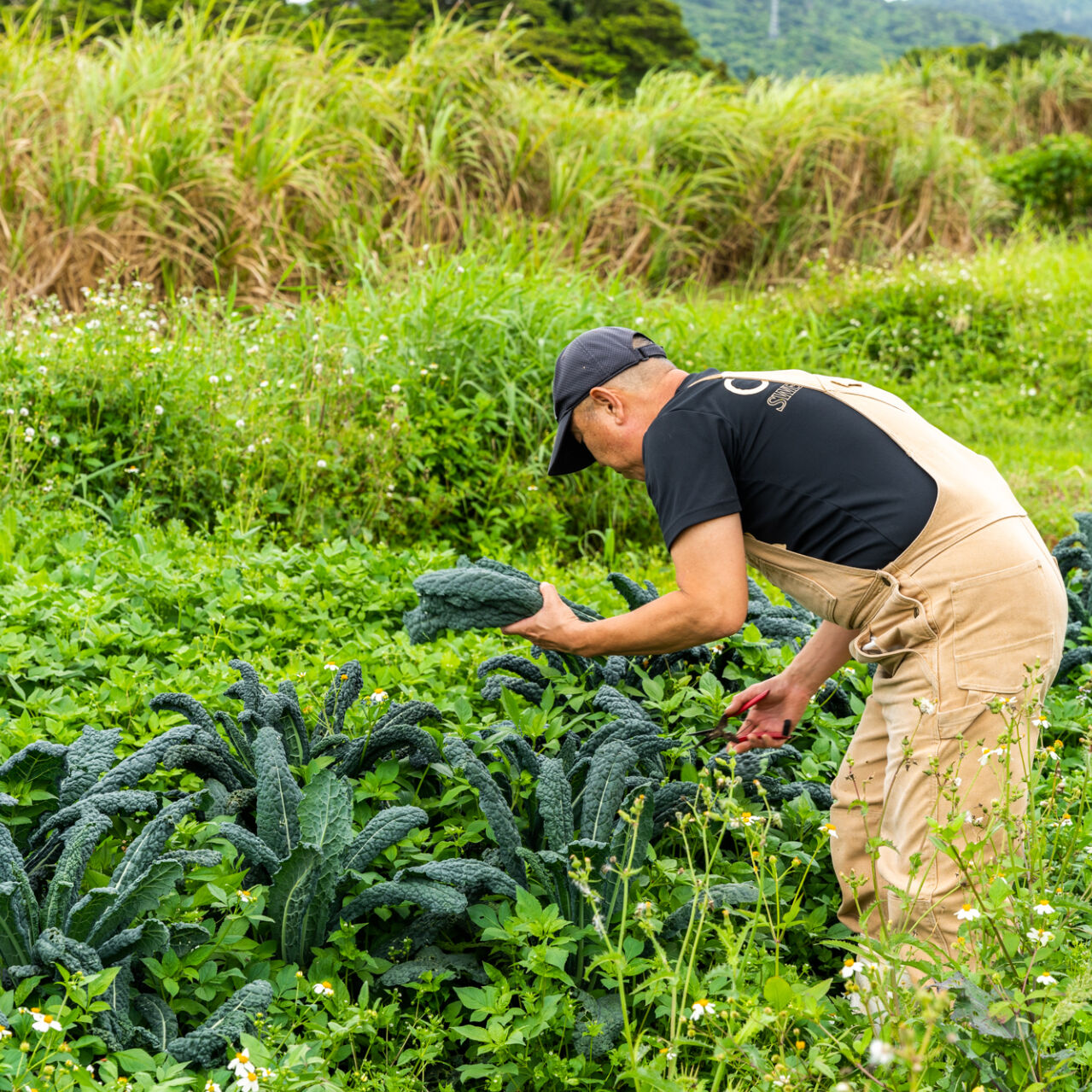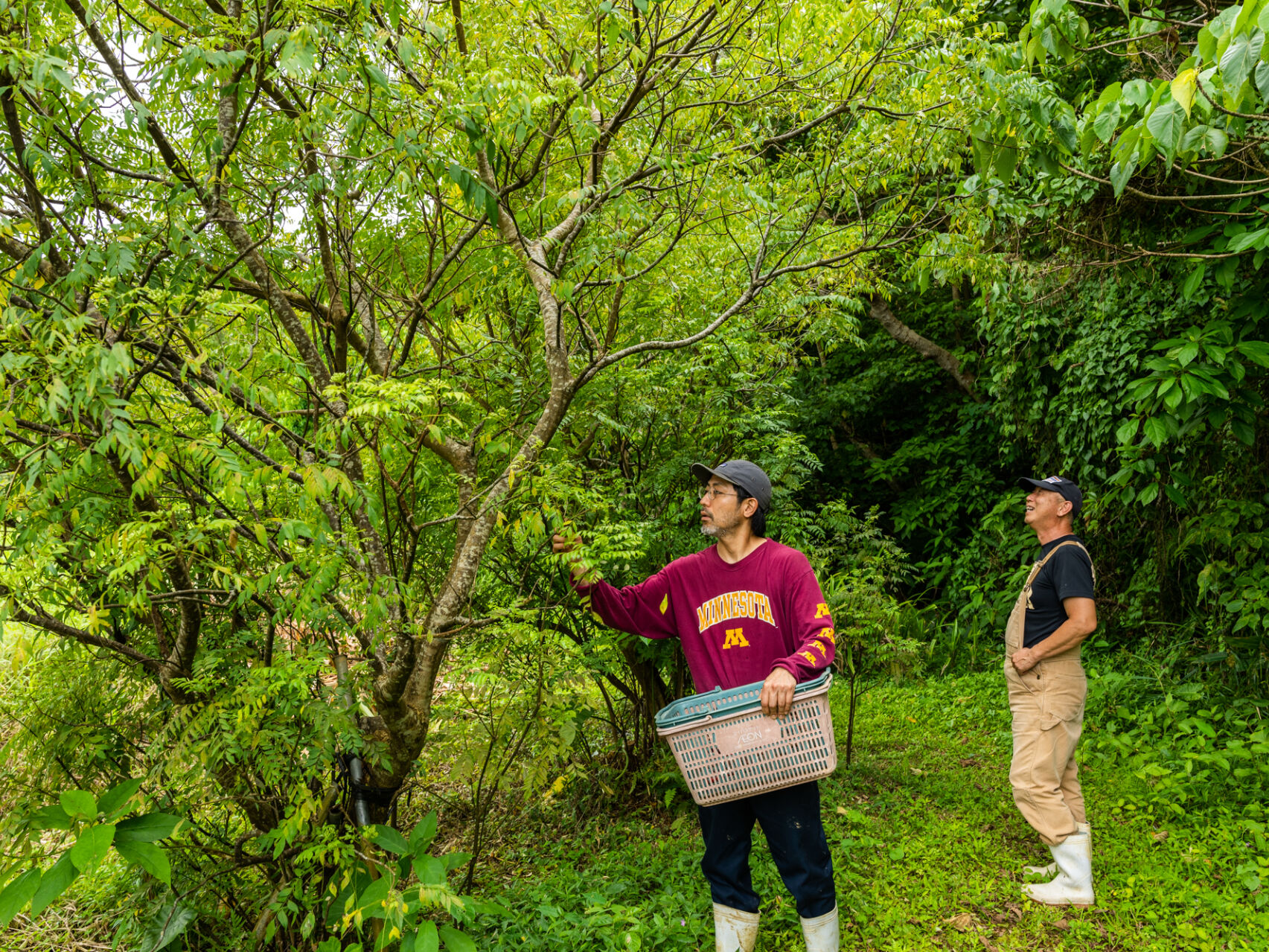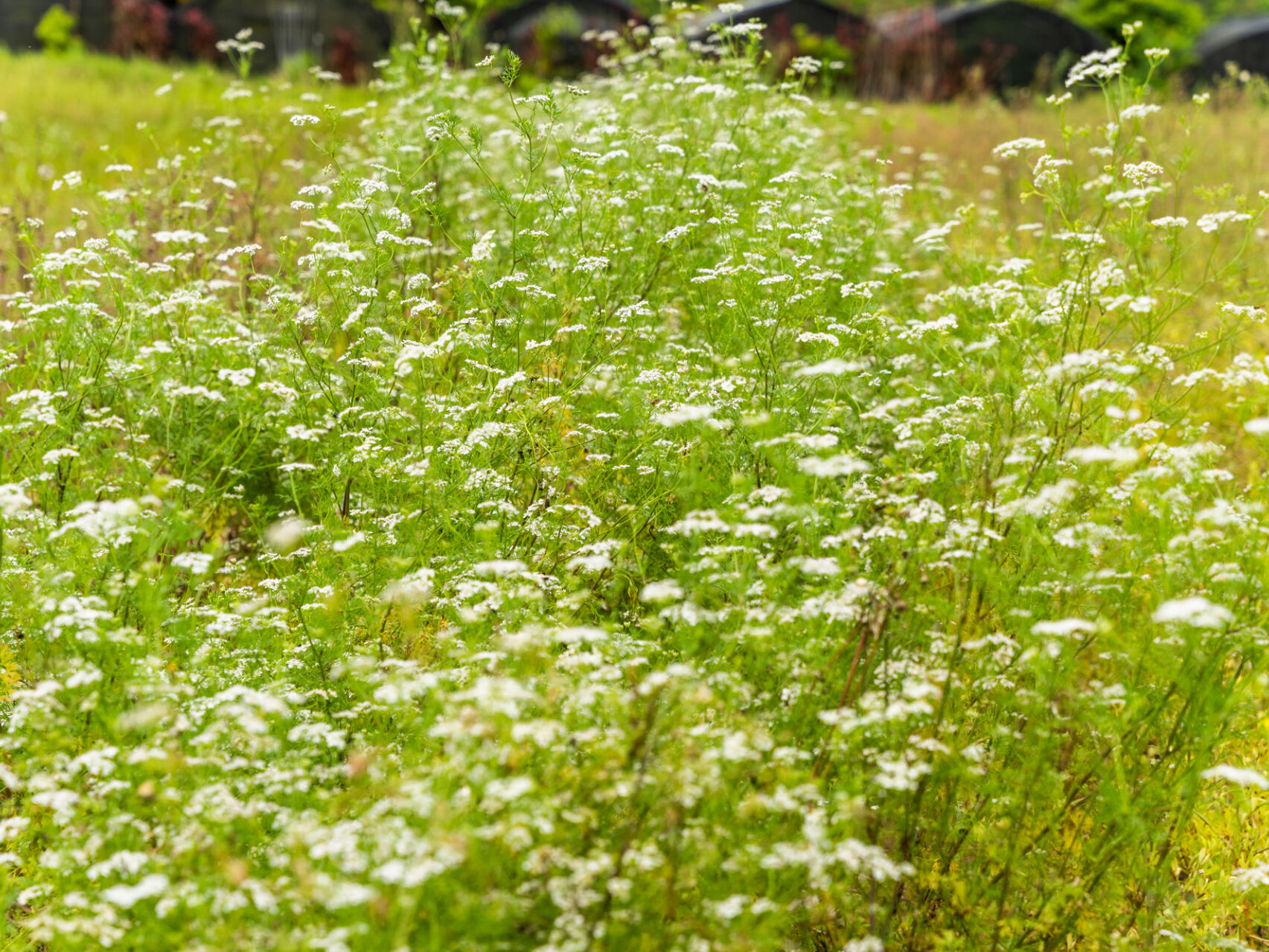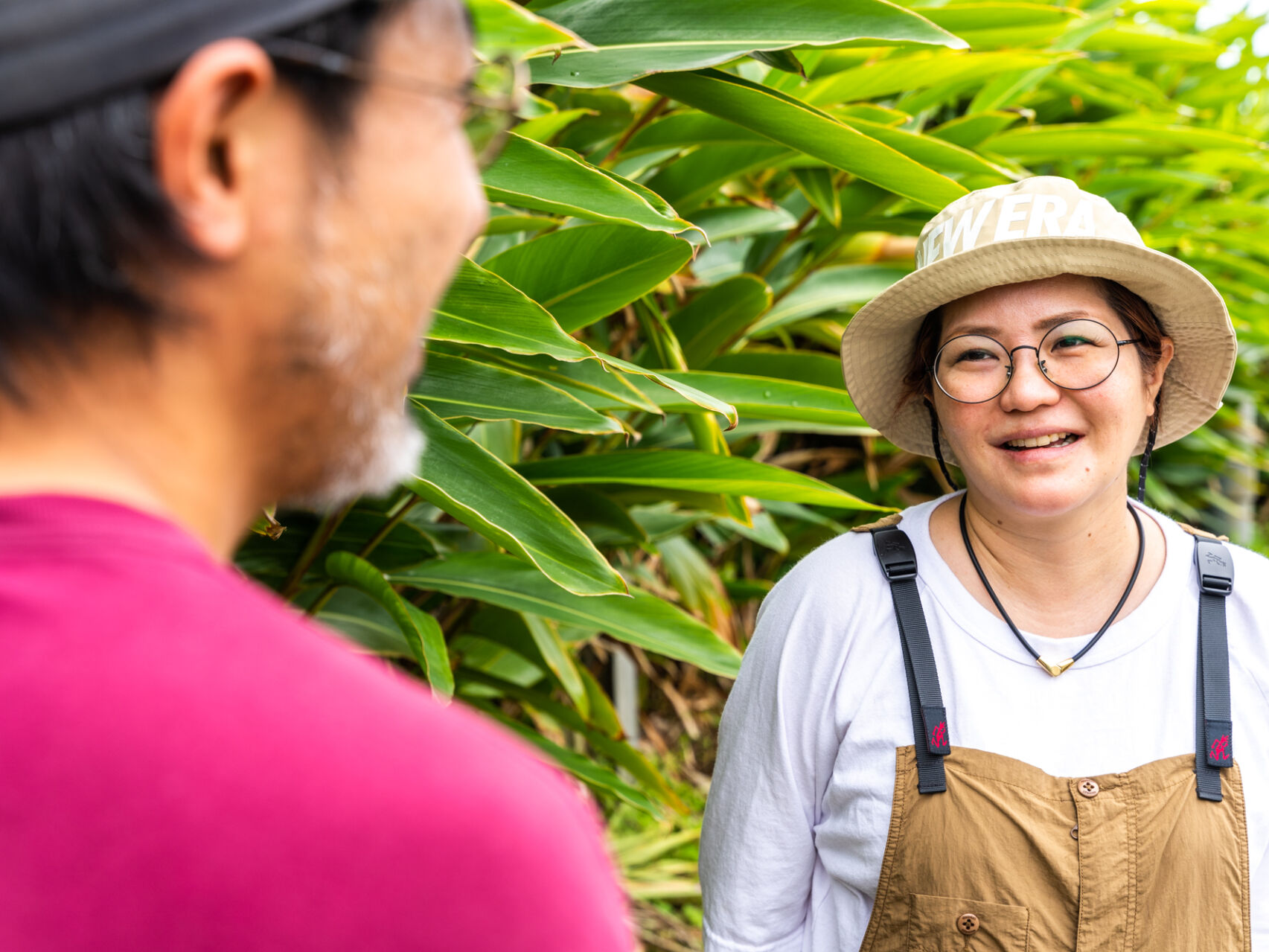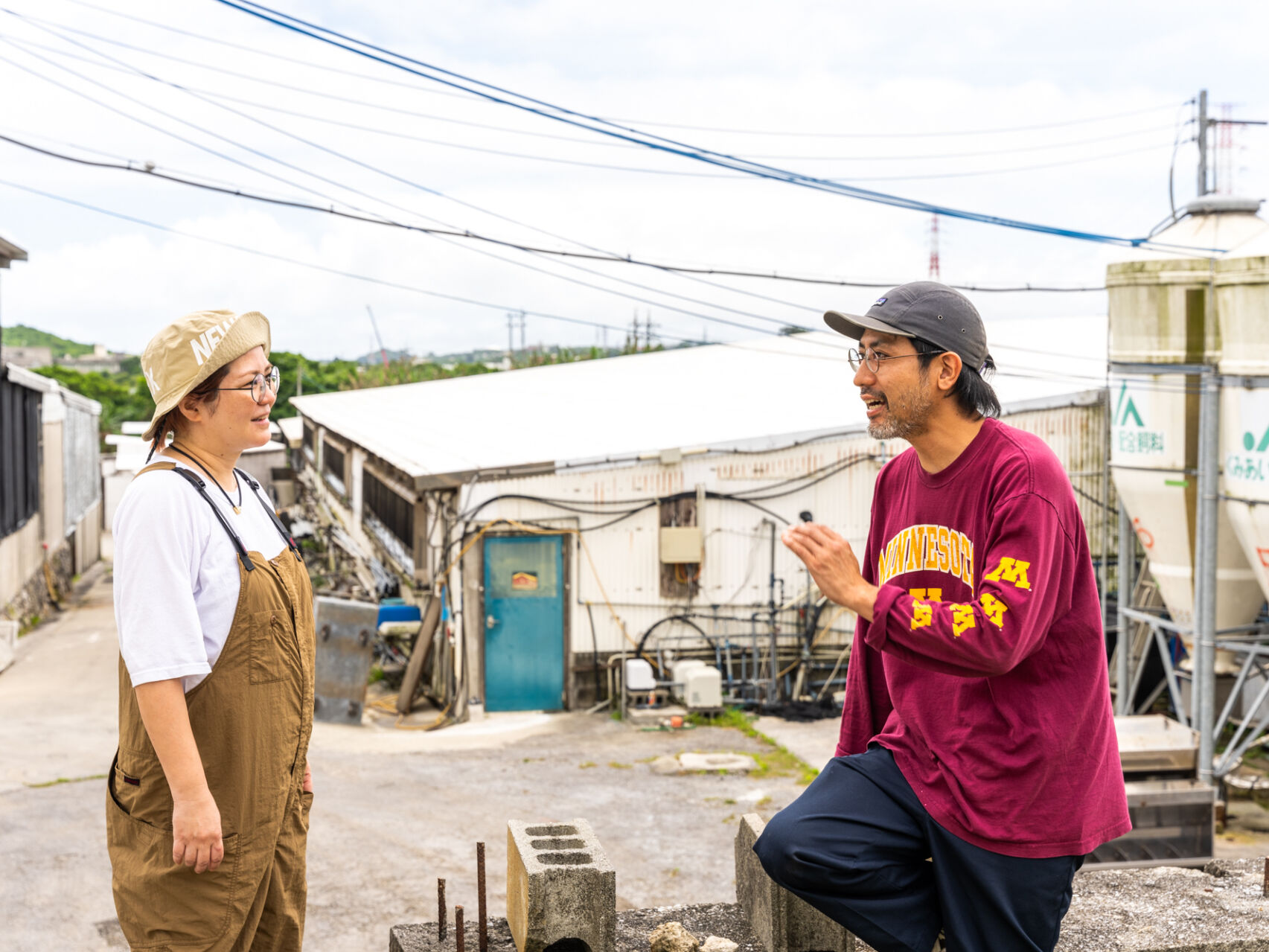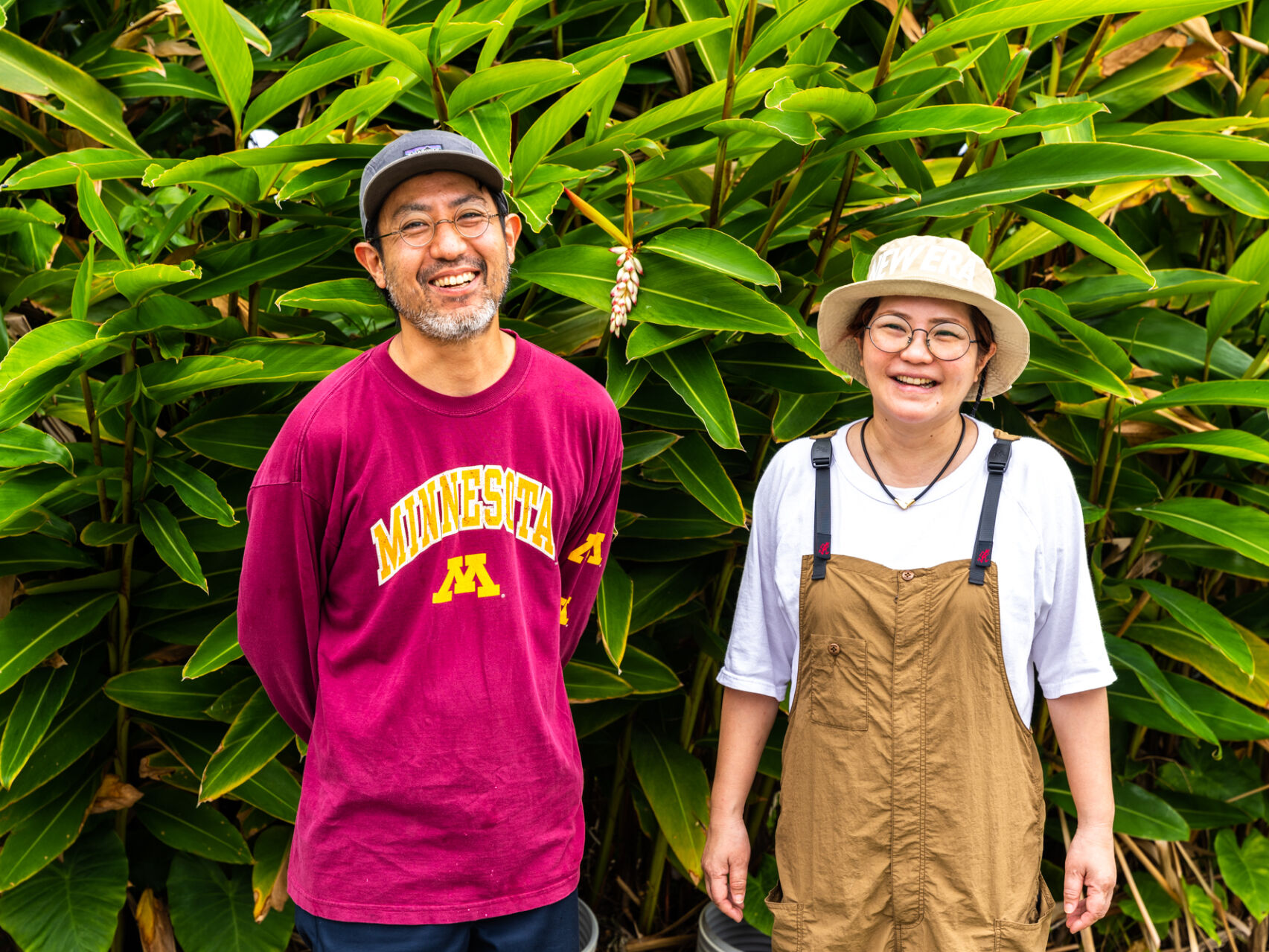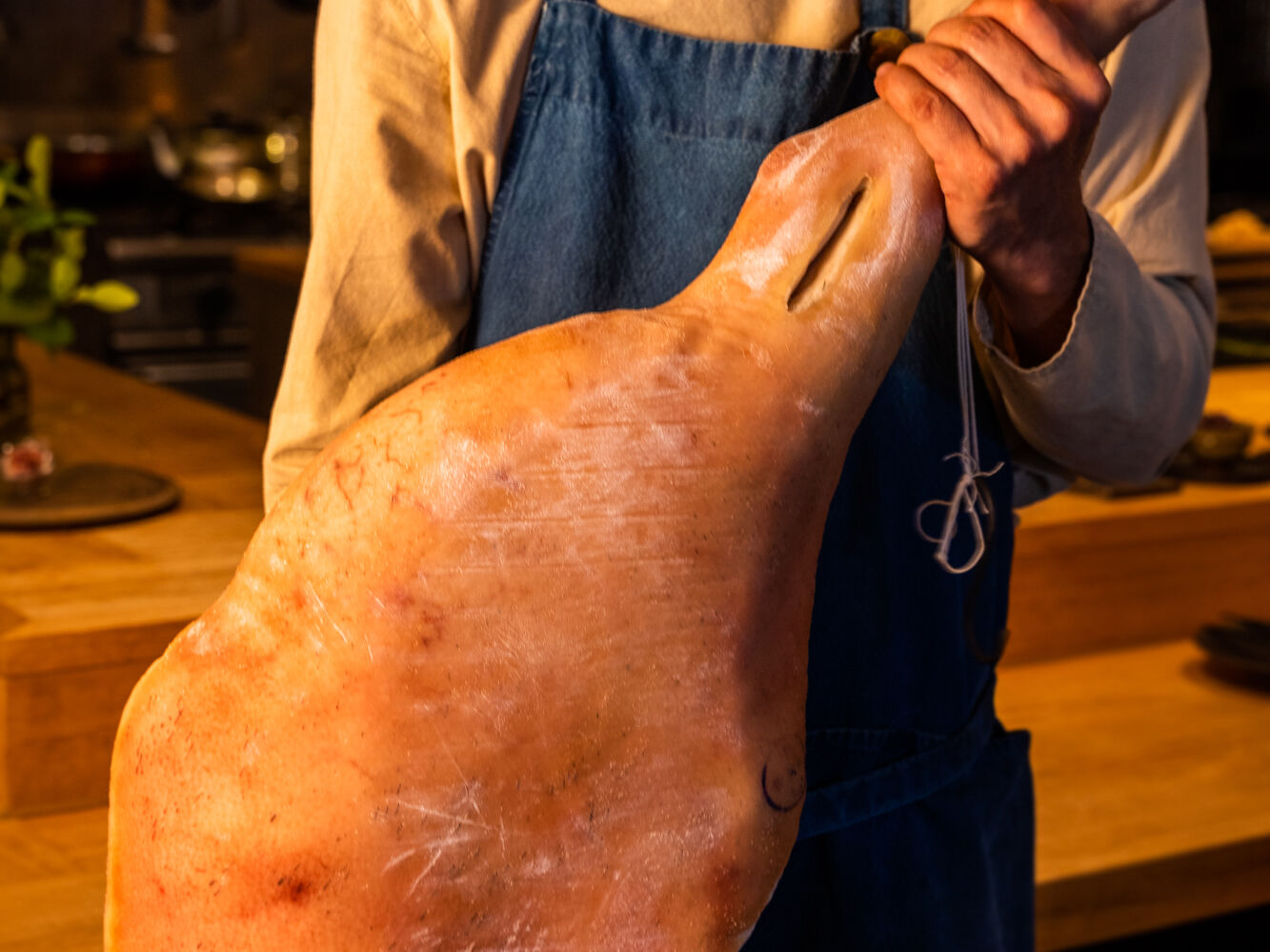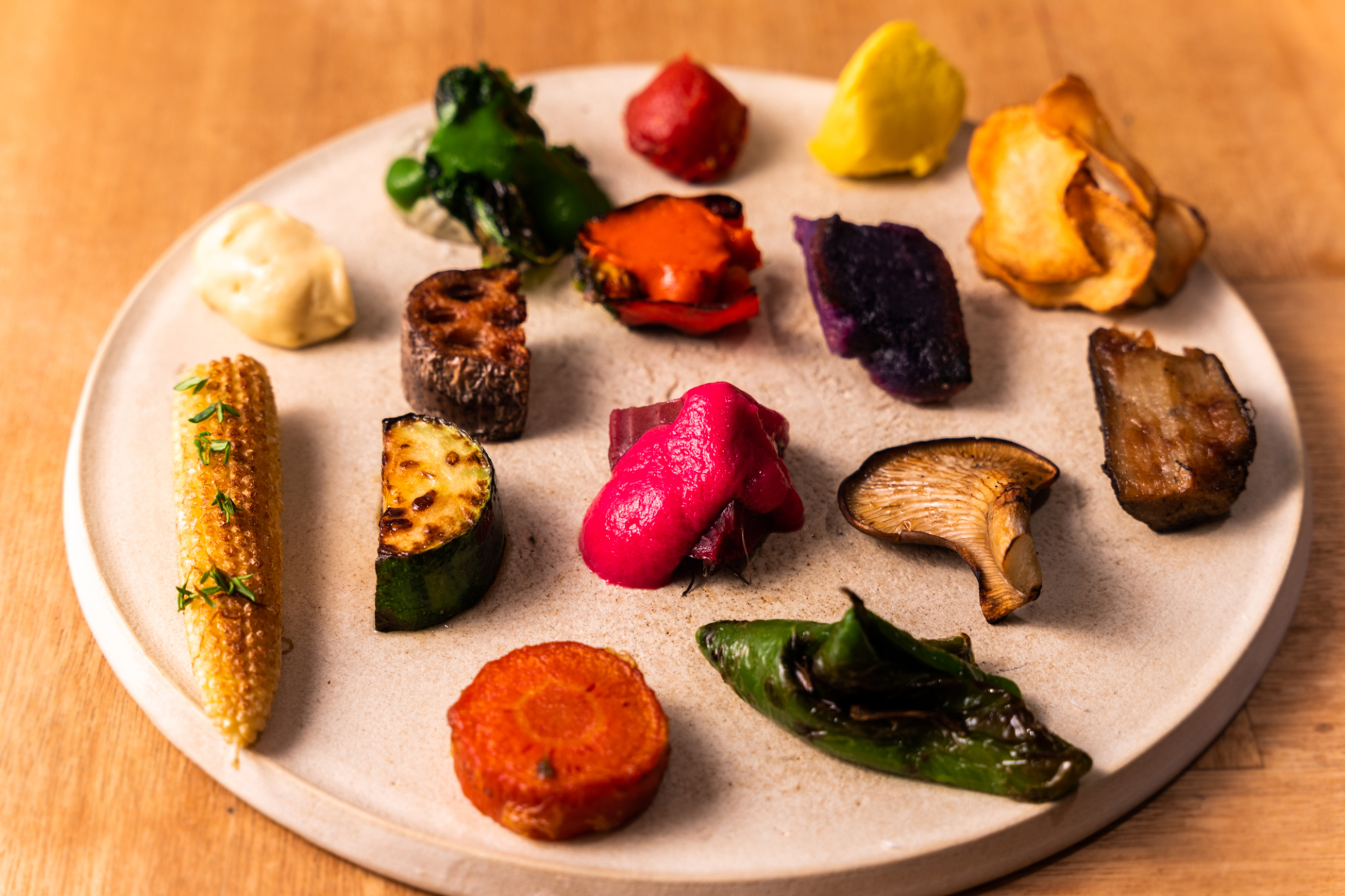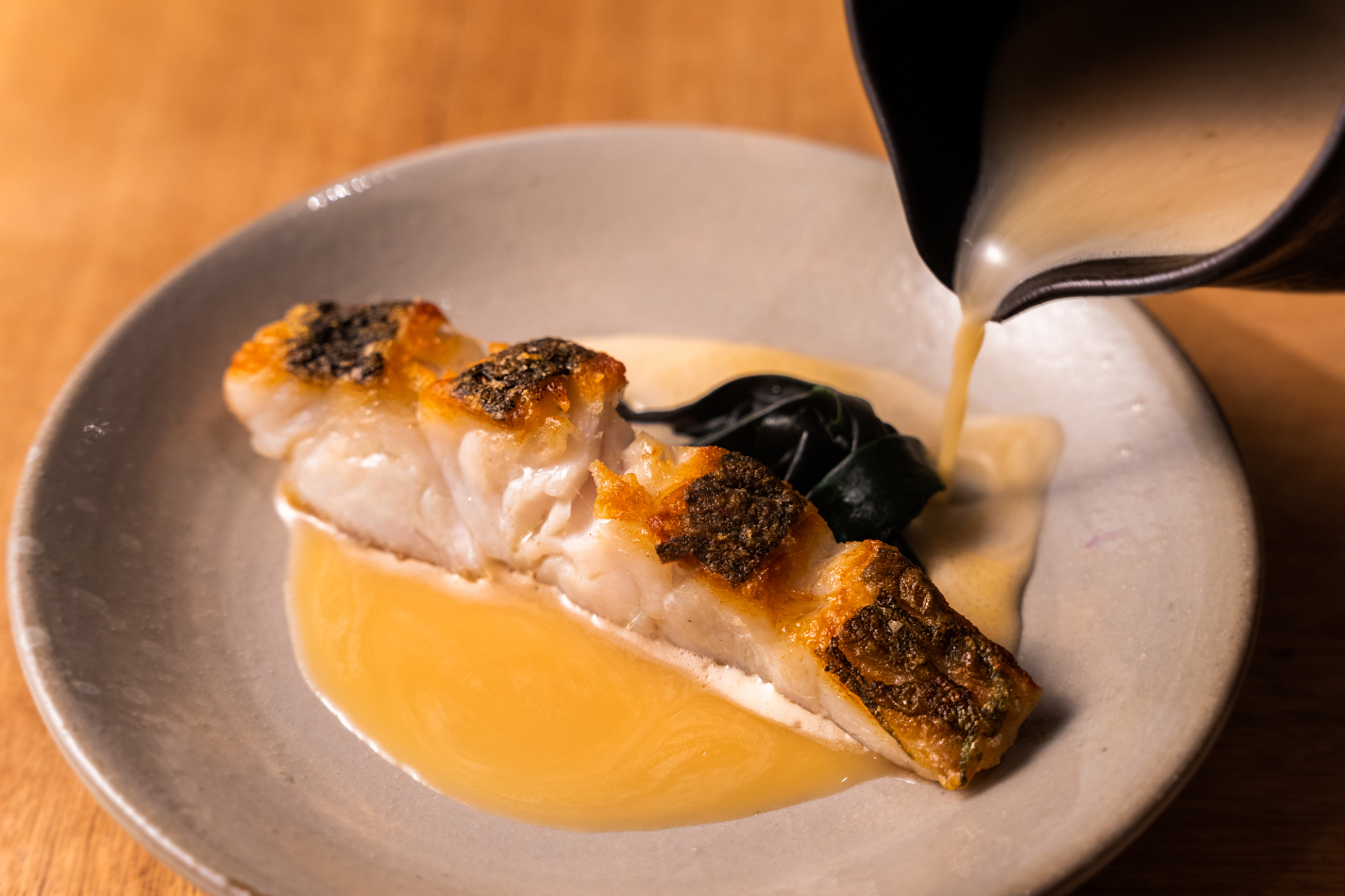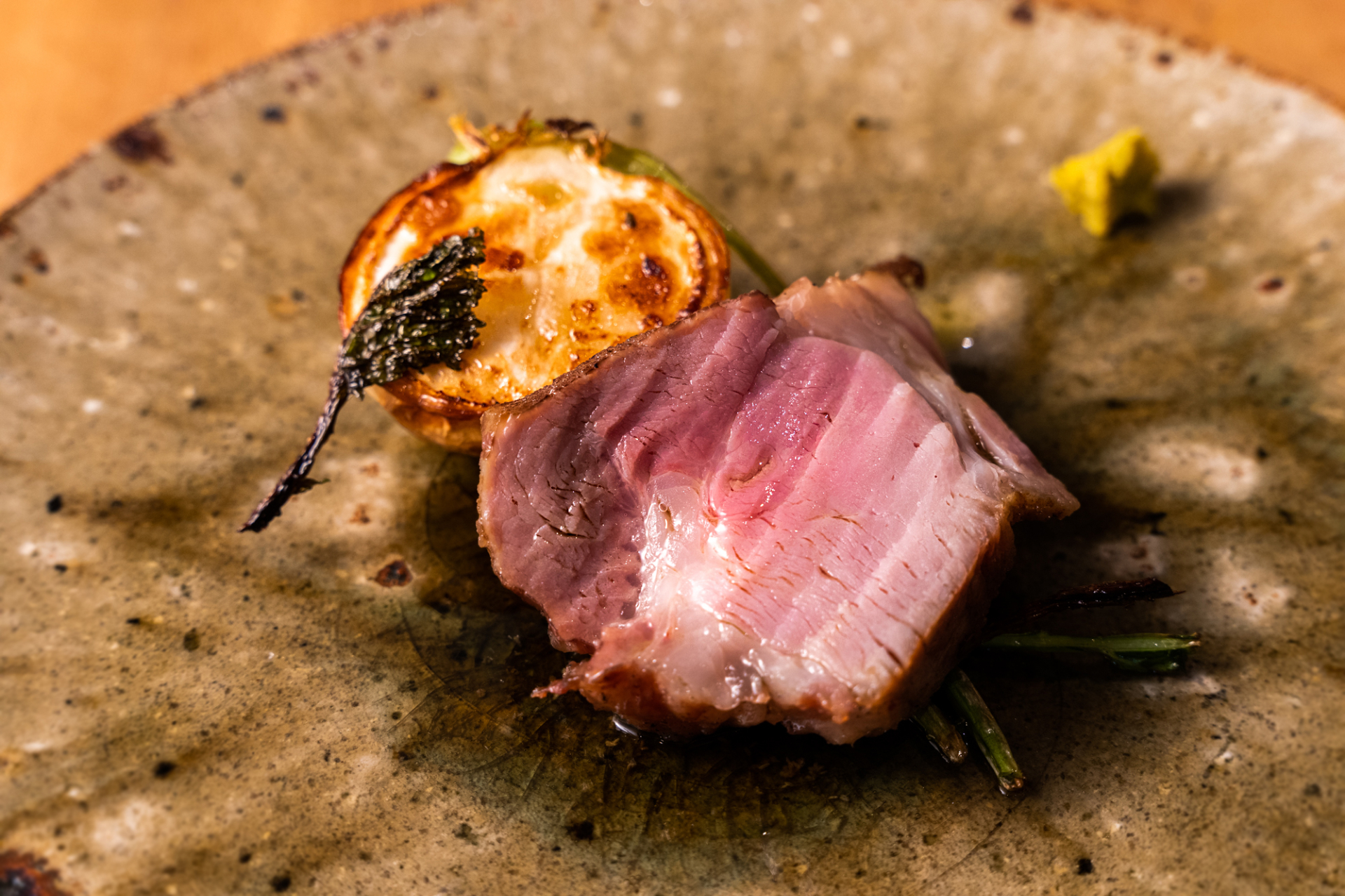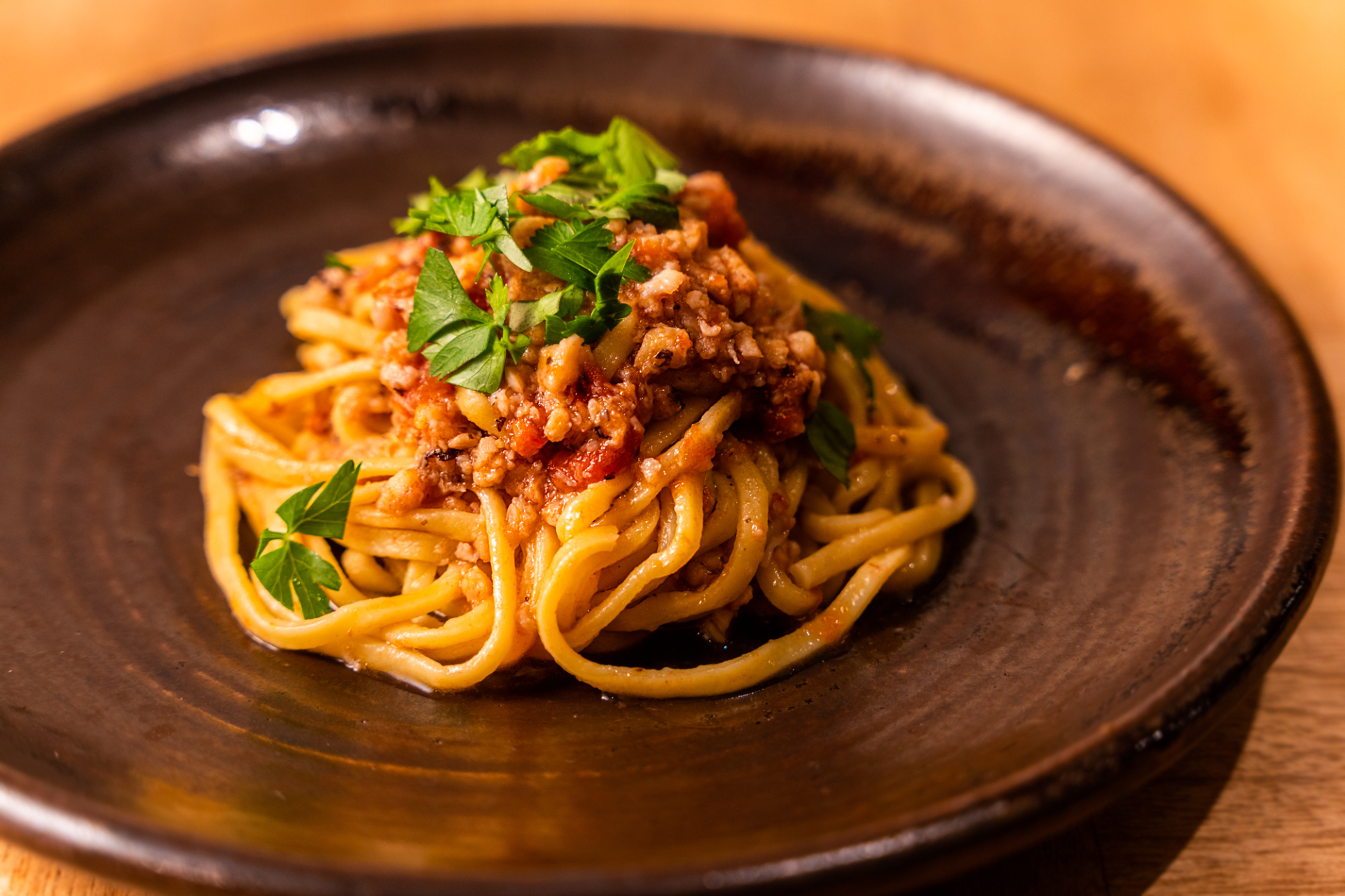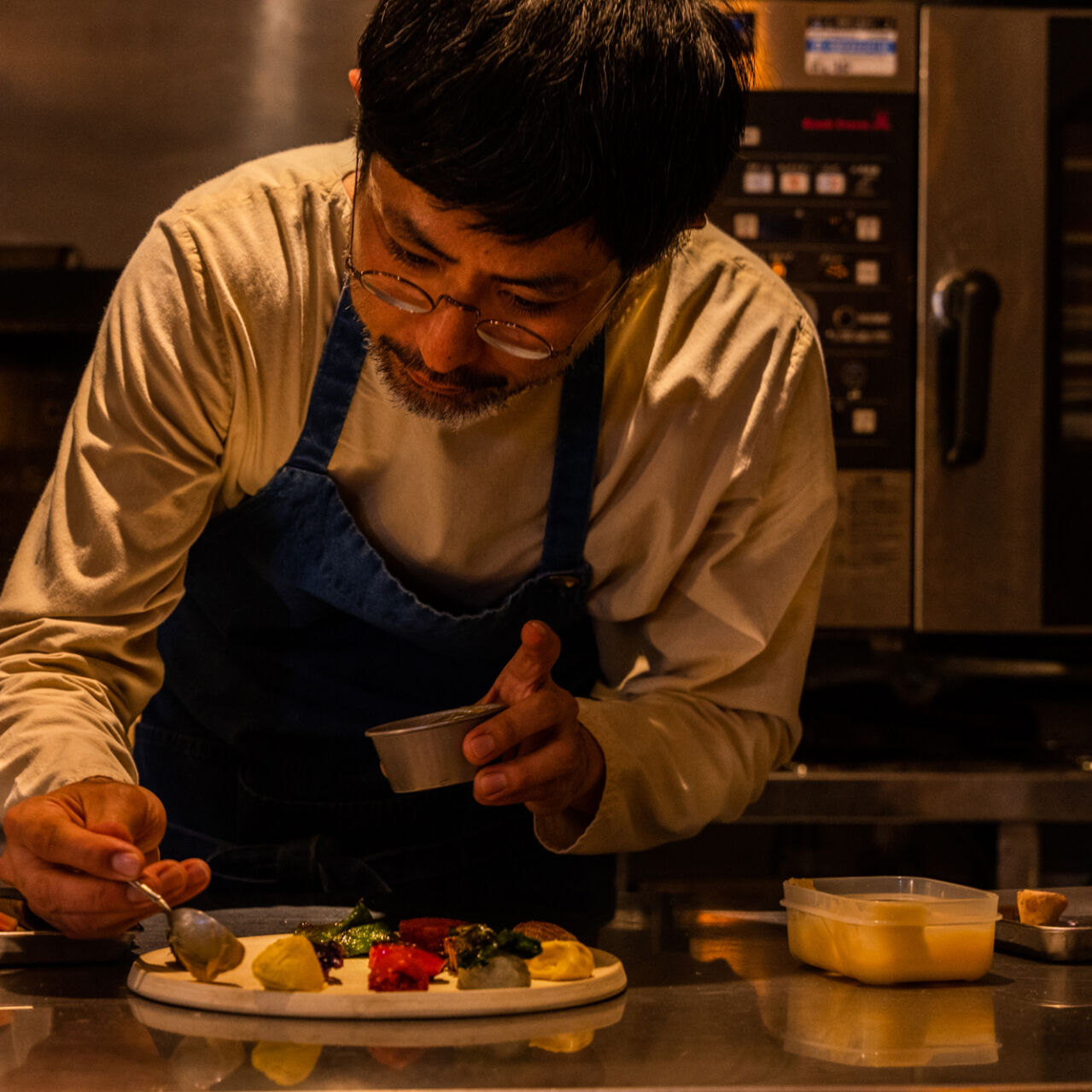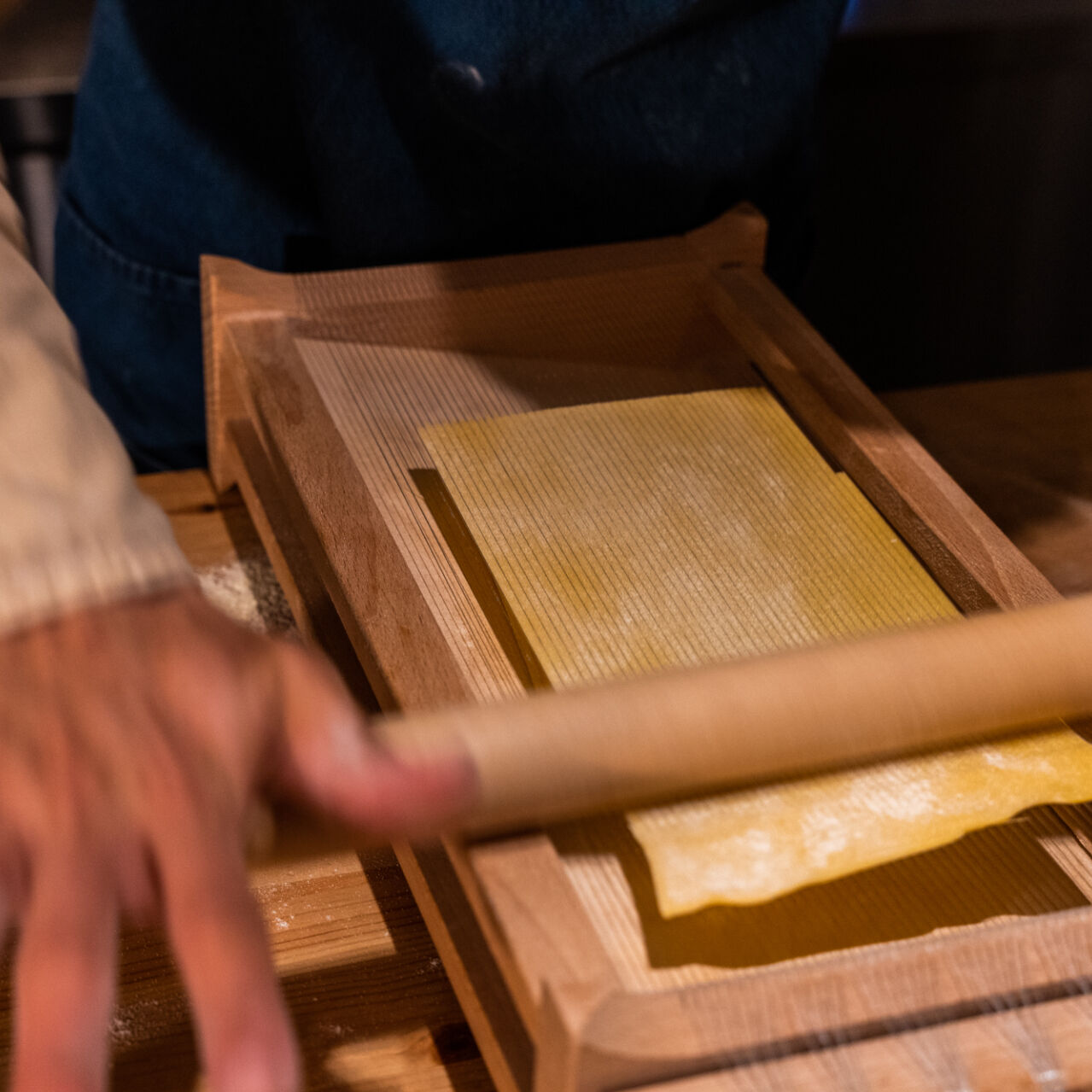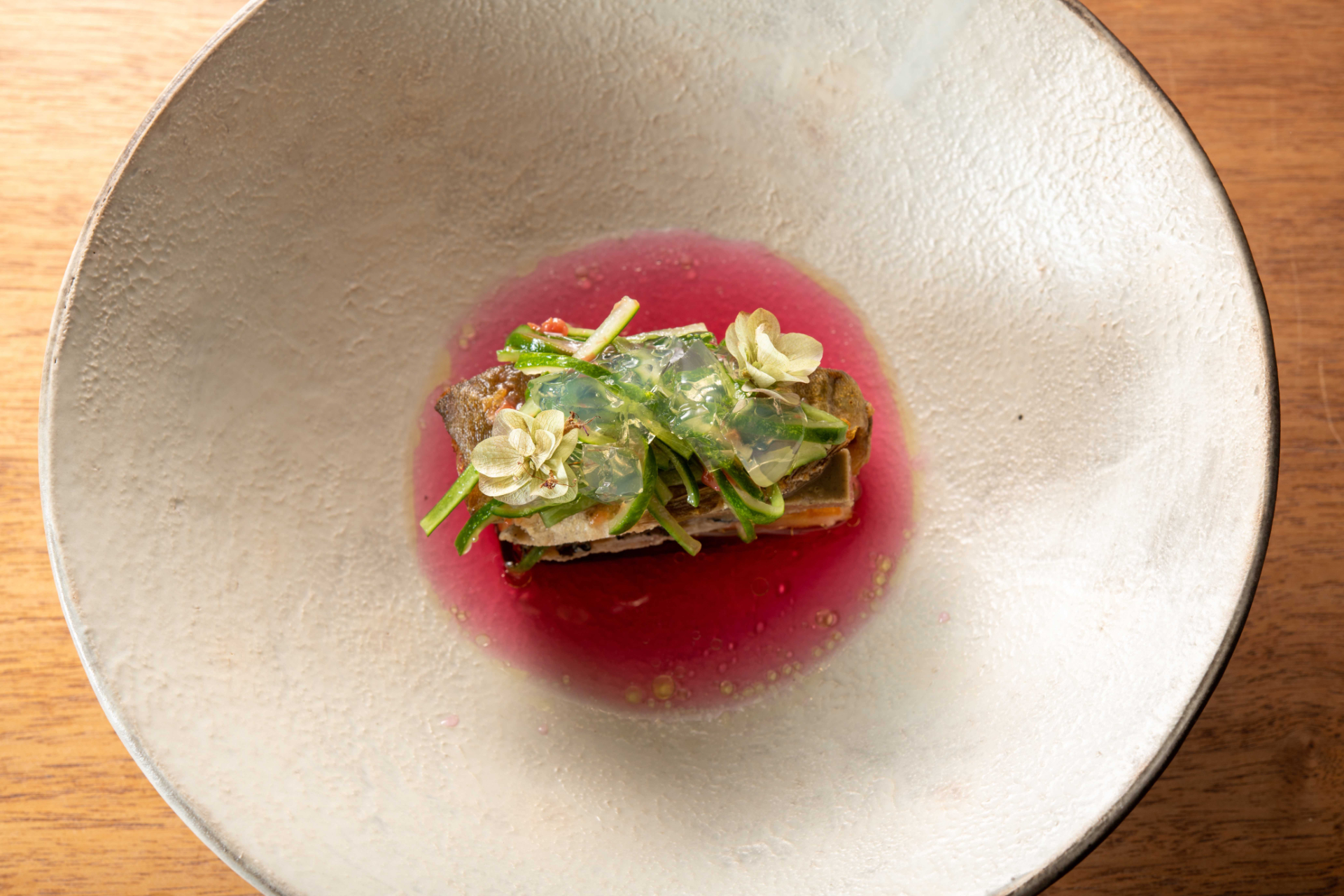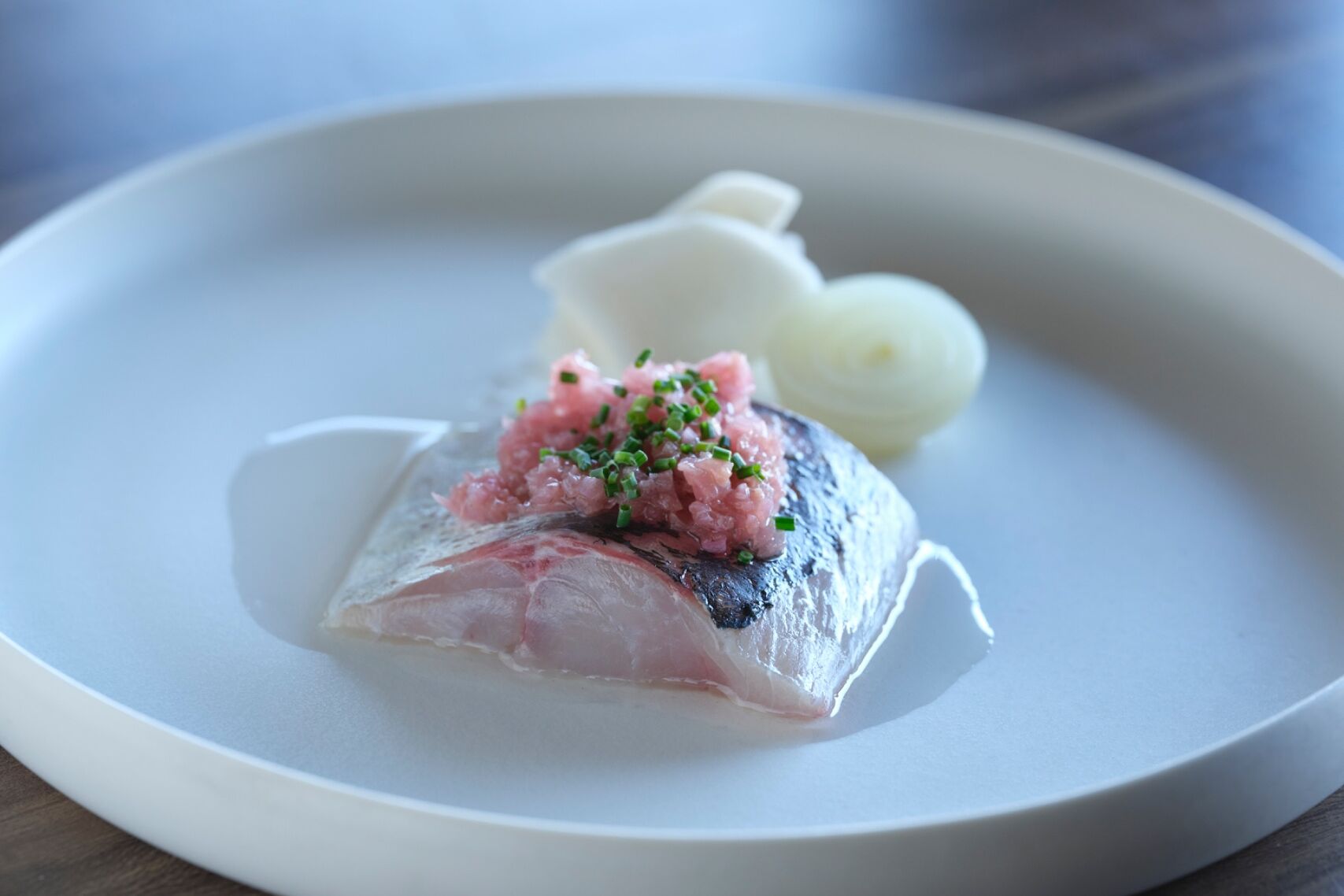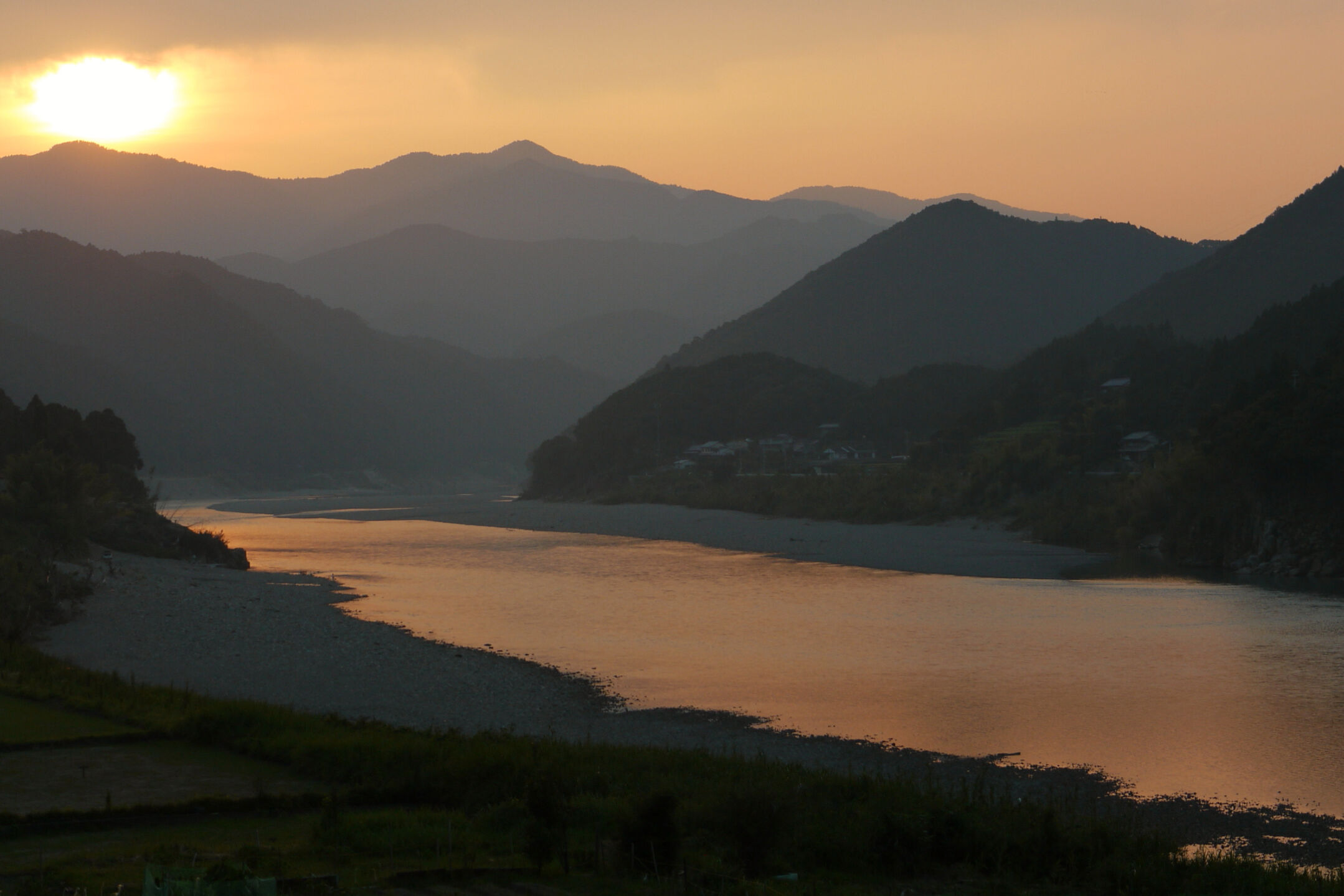“To make Okinawa a true island of gastronomy”—this is the heartfelt ambition that Chef Satoshi Shiohira, a native of Uruma City, has carried ever since opening his restaurant Totto.
After returning from Italy, where he worked at the acclaimed restaurant ARDOR, he began to see Okinawa’s natural abundance in a new light.
“Only after coming back did I truly realize how rich this place is,” he recalls.
It may have been his four and a half years in Italy—surrounded by people who deeply value their local food traditions—that allowed him to rediscover Okinawa’s gifts with fresh eyes.
Okinawa’s subtropical climate fosters a unique biodiversity: vegetables, fruits, herbs, and spices flourish on land, while the surrounding seas provide nutrient-rich seafood. Add to that a long-standing tradition of pork and fermentation—and Okinawa becomes a chef’s treasure trove.
At Totto, Chef Shiohira applies the techniques he refined in Italy to highlight the full potential of local ingredients. But none of it happens alone. Each dish is born through collaboration—with farmers, foragers, fishers, and other passionate producers.
Let’s meet the people behind his plates.
Uruma City, Hamahiga Island (Katsuren Peninsula) / Spearfisherman Daisuke Shiroma
Located in central Okinawa’s Uruma City and connected to the Katsuren Peninsula by a sea road, Hamahiga Island is steeped in myth. It is said to be home to deities featured in ancient Ryukyuan legend. Neighboring Tsuken Island and the Katsuren Peninsula are also part of this region long known for its rich fishing heritage. It is here that Daisuke Shiroma continues the centuries-old practice of light diving, a traditional Okinawan night-fishing technique.
Light diving involves the use of handheld lamps to target fish while they sleep at night. Divers equipped with minimal gear free-dive to approach their prey, illuminating the water just enough to strike with a speargun. The most skilled divers are said to land a perfect hit to the head with a single thrust. Because the fish are bled underwater, their freshness is exceptional—and their market value is especially high.
Having left behind a career in Tokyo advertising, Shiroma returned to inherit his grandfather’s fishing tradition. Today, he is regarded as a master of his craft and a trusted source for some of Okinawa’s best restaurants. Supplying a rich variety of local fish—including makubu, gāra, chinu (black sea bream), and akajin miibai (coral trout), known collectively as Okinawa’s “three jewels of the sea”—Shiroma delivers his catch in impeccable condition. Through this dedication, he has become a vital force in raising the bar of Okinawan cuisine.
Chef Shiohira describes Shiroma as someone who not only absorbs feedback with great flexibility, but also envisions the entire journey of the fish he catches—even beyond the hands of the chef. “Even our casual exchanges are a source of learning,” Shiohira says. “For me, he’s an indispensable source of inspiration.”
Shiroma is also pioneering aquaculture, farming shiraihige uni (delicate Okinawan sea urchins), shirenashijimi (Japan’s largest species of freshwater clam, which lives under mangroves), sea grapes, and eels. “By replicating conditions as close to nature as possible,” he says, “we’ve reached the point where aquaculture of species long thought impossible in Okinawa—like eels and uni—is becoming a reality.”
Nago City / Yukio Yoshino, Harusaa (Farmer) & CEO, Cooksonia Agricultural Production Company, Ltd.
Based in Kunigami District in the northern part of Okinawa’s main island—a region registered as a UNESCO World Natural Heritage Site in 2021—Yukio Yoshino is a seasoned harusaa (Okinawan farmer) who has long mentored new agricultural entrants. During the lead-up to Totto’s opening, Chef Shiohira visited Yoshino frequently, working alongside him in the fields, hands deep in soil. Shiohira fondly recalls those formative days, describing Yoshino as his “vegetable master,” and says it was in those fields that he truly learned the character, allure, and potential of Okinawan vegetables.
With freshly harvested kohlrabi (German turnip) and cavolo nero (Tuscan kale) in hand, Shiohira remarked, “These are perfect when stewed down until tender to make ribollita, the traditional Tuscan vegetable soup.” With an easy camaraderie, the two worked their way through the fields, quickly harvesting an armful of vibrant Okinawan produce.
Yoshino’s most promising project today is a roughly 3,000-tsubo (approx. 2.5-acre) spice farm that he believes holds the key to “a new future for Okinawa and Yambaru”—the mountainous northern region of the main island known for its rich biodiversity and pristine forests. There, trees planted over a decade ago have grown into towering curry leaf plants, alongside pandan leaves, Ceylon cinnamon, kaffir lime, allspice, and lemon myrtle. “You hear the name ‘karaki’ more and more these days—it’s also known as Ryukyuan cinnamon,” Yoshino explains. “And the seeds of gettō—a native ginger plant prized for its floral aroma—are what we call Ryukyuan cardamom.” He shares his ambition: “In the near future, I’d love to create a delicious curry made entirely with spices grown here in Yambaru.”
Uruma City / Shinobu Kina, Third-Generation Pig Farmer, Kina Farm
Shinobu Kina, the daughter of a legendary pig farmer who pioneered Okinawa’s premier pork brands Beni-buta and Beni Aguu, has been involved in the family business since her teens. When her father, Norimasa Kina, stepped away from the business due to illness, Shinobu took over as the third-generation head of Kina Farm. Today, she pours her heart into raising a new lineage of Aguu pork known as “Kina Farm’s Aguu.”
The devastation caused by a swine fever outbreak in 2020 brought indescribable grief and frustration. But from this low point, Kina began again from scratch—embracing innovative approaches that are reshaping the future of pig farming in Okinawa.
“While most pigs are raised for about 180 days, our Aguu grow slowly, requiring 240 to 270 days to mature,” Kina explains. “We give them water enriched with lactic acid bacteria daily to keep their digestive systems clean, which eliminates the typical porky odor. The fat is sweet and melts like butter, and the red meat is deeply savory and full of umami.”
Here are four dishes by Chef Shiohira, each crafted to showcase the finest ingredients Okinawa has to offer.
Available only during Okinawa’s prime vegetable season from late February to April, “Le Verdure” is a vibrant celebration of local produce. Around 14 varieties of seasonal vegetables are first deconstructed through drying, fermenting, and aging, then reassembled with separately prepared ingredients—roasted, steamed, sautéed, or fried. The result is a richly layered dish that brings out the power and depth of Okinawan-grown vegetables.
Totto
Address: 4-6-7 Kakazu, Ginowan City, Okinawa Prefecture 901-2226
Tel: 098-800-2592
Instagram: @totto_okinawa
Access: Approx. 25 minutes by car from Naha Airport via Routes 332 and 58
Text: Akira Matsuura (edible.)
Photography: G-KEN
Translation: Yumiko Sushitani
Related Posts
2025-08-14
The Bounty of the River in “Little Kyoto of Oku-Mino”
The town of Gujo Hachiman in Gifu Prefecture, with the crystal-clear Yoshida…
2025-02-21
A Fish Merchant’s Vision Transforms Yaizu into a Culinary Destination
"Can a single fish merchant really transform a region's food culture?" This was…
2024-11-10
The Art of Watershed Cuisine Along Sacred Mountain Waters In a World Heritage Village
Tenkawa Village is part of the UNESCO World Heritage site "Sacred Sites and…


